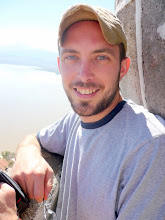 About a week ago (the weekend of November 10 and 11), we had the Asemblea de Vida y Mision (Life and Mission Assembly) of the IELU (Iglesia Evangelica Luterana Unida – Unted Evangelical Lutheran Church) of Argentina and Uruguay, with guests from the Evangelical Lutheran Churches of Peru and Chile. It was great to meet people from all over these countries and to learn about their churches and ministries. A group of nine people from our church, Mision Maria Magdalena, participated in the gathering.
About a week ago (the weekend of November 10 and 11), we had the Asemblea de Vida y Mision (Life and Mission Assembly) of the IELU (Iglesia Evangelica Luterana Unida – Unted Evangelical Lutheran Church) of Argentina and Uruguay, with guests from the Evangelical Lutheran Churches of Peru and Chile. It was great to meet people from all over these countries and to learn about their churches and ministries. A group of nine people from our church, Mision Maria Magdalena, participated in the gathering.This gathering was held in Buenos Aires at ISEDET (Instituto Superior Evangélico de Estudios Teológicos - The Evangelical Upper-level Institute of Theological Studies), which is an ecumenical (representing most of the historic protestant churches in Latin America) seminary affiliated with the IELU. Talking with seminarians there made me miss LSTC, and reflect on the similarities between the two seminaries. From what I observed, seminarians at ISEDET were discussing familiar issues such as how to be engaged in ministry in an ever-changing religious dynamic (such as the growth of pentecostal and evangelical churches) and in light of current social and political realities. Students entering seminary with the IELU come straight from secondary school (high school), and have four years of studies, followed by two years of internship.
This was not a church policy assembly, but rather a gathering to come together as a church (everyone – pastors, lay members, etc.) and to discuss “Spirituality in our present context, from a Lutheran perspective.” To symbolize coming together from many different places, we interwove bright pieces of fabric (see picture). We heard from IELU vice president Dr. Guillermo Hansen, former ISEDET professor Dr. John Stumme, and Gettysburg Seminary president Dr. Michael Cooper White.
Dr. Guillermo Hansen’s remarks reflected the focus of the gathering. He opened up the theme of spirituality by focusing on these words from Martin Luther: “A Christian lives not in himself/herself, but in Christ and his/her neighbor.” He discussed various issues in Christian spirituality, such as the privatization of the Holy Spirit and how religion becomes only a portion of one’s life. He explained how the Protestant Reformation signified a questioning of old and new spiritualities. Luther talked about a “living God,” and this creates a tension (with sin). He brought up this key point: The Christian does not live enclosed, but lives in Christ by faith, in their neighbor by love, and the creation by hope. Here’s the synthesis: The Spirit of Christ lives a amazing, free, and unexpected character of grace. That grace comes to be from God that is made weak, that accompanies us, and heals us for a new life.
I was also able to travel around Buenos Aires, see the downtown—the Casa Rosada (presidential house), Plaza de Mayo (central plaza where the Mothers of the Disappeared during the Dirty War gather every week), tango dancers on Avenida Florida, the Cathedral, etc. I also traveled to Uruguay for a day to renew my visa, and got to walk around the small historic town of Colonia.
down town Buenos Aires (Plaza de Mayo and Casa Rosada):

Colonia, Uruguay:






